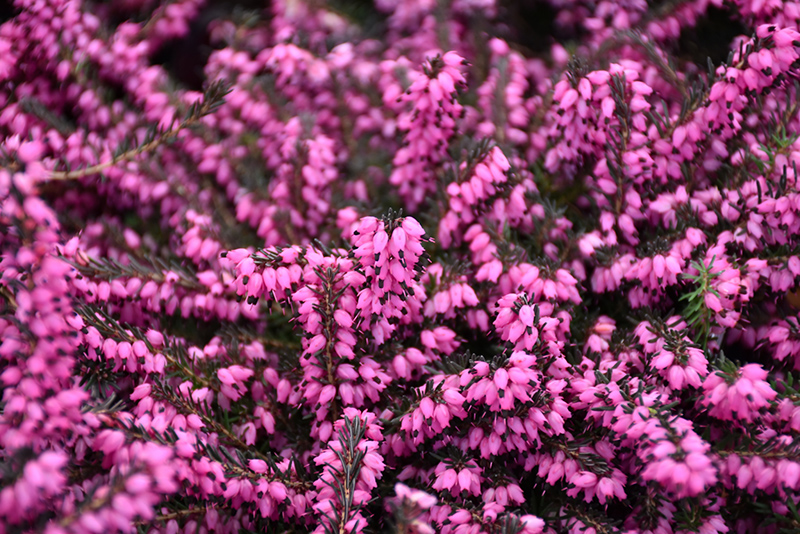Heather, Kramer's Rote Erica carnea 'Kramer's Red' Height: 24 inches Spread: 3 feet
Sunlight:
Hardiness Zone: 5a Other Names: Spring Heath, Snow Heath, Winter Heath Description: A fascinating groundcover featuring rich pink tubular flowers in early spring and deep green needle-like foliage, ideal for poor soils, also great for massing in the garden; requires organic highly acidic soil, full sun and absolutely no standing water Ornamental Features Heather, Kramer's Rote is bathed in stunning spikes of pink bell-shaped flowers rising above the foliage from late winter to mid spring. It has dark green evergreen foliage. The tiny needles remain dark green throughout the winter. Landscape Attributes Heather, Kramer's Rote is a multi-stemmed evergreen shrub with a mounded form. It lends an extremely fine and delicate texture to the landscape composition which should be used to full effect. This is a relatively low maintenance shrub, and should only be pruned after flowering to avoid removing any of the current season's flowers. It is a good choice for attracting bees to your yard. It has no significant negative characteristics. Heather, Kramer's Rote is recommended for the following landscape applications; Planting & Growing Heather, Kramer's Rote will grow to be about 24 inches tall at maturity, with a spread of 3 feet. It tends to fill out right to the ground and therefore doesn't necessarily require facer plants in front. It grows at a slow rate, and under ideal conditions can be expected to live for approximately 20 years. This shrub should be grown in a location with partial shade or which is shaded from the hot afternoon sun. It does best in average to evenly moist conditions, but will not tolerate standing water. This plant should be periodically fertilized throughout the active growing season with a specially-formulated acidic fertilizer. It is particular about its soil conditions, with a strong preference for rich, acidic soils. It is somewhat tolerant of urban pollution. Consider applying a thick mulch around the root zone in winter to protect it in exposed locations or colder microclimates. This is a selected variety of a species not originally from North America. Special Attributes Evergreens need to be watered during the winter. Our desert climate especially in late winter to early spring evergreens can suffer during next growing season. An easy way to remember check for dryness on the holidays Halloween, Thanksgiving, New Year's Day, Valentines Day & Easter.![]()
![]()
![]()
![]()
![]()
![]()
![]()
![]()
![]()
![]()
![]()
![]()
![]()

